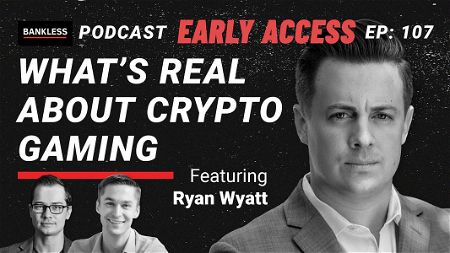The Metaverse Emerges
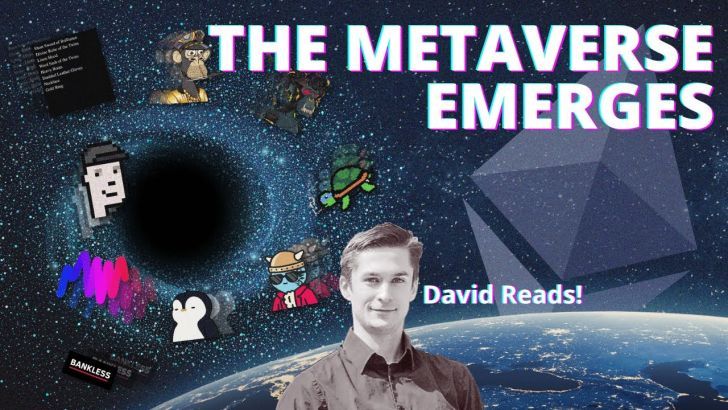
Dear Bankless Nation,
The metaverse has been a hot topic these days—on our recent podcast Raoul Pal defined it as “digital fluidity”.
What is it exactly? Why is it important? How will it emerge? How does it relate to the real world and our identities?
And what’s Ethereum’s role in this whole thing?
Grab a drink, strap in, and let’s unpack this.
David explains the metaverse.
- RSA
The Metaverse Emerges
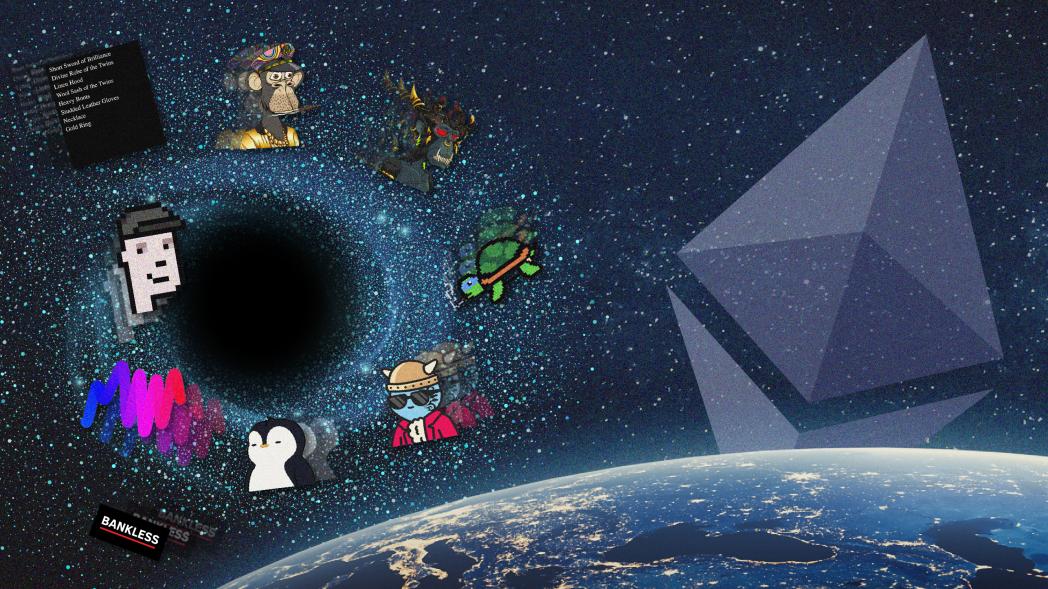
As the NFT mania grows in energy, so has the conversation around ‘the metaverse’. We all talk about ‘the metaverse’, but no one has meaningfully attempted to define it.
This article offers an actionable proposition about what the metaverse actually is.
‘The metaverse’ will be an orchestration of many different layers and technologies, but it will ultimately collapse upon a single shared source-of-truth that all components of the metaverse will abide by.
The metaverse will be made up of objects, and all those objects must know that all other objects exist. From this foundation, we can create a ledger of all objects in the known metaverse, as well as their shared history of interactions and stories.
Understanding the metaverse requires stripping it into its component parts, and then recomposing it into a single narrative of what ‘it’ is.
Let’s dive in.
🧱 Article Legos
Like the money legos of Ethereum, my previous articles stack upon each other and are important to read in order to carry the stream of consciousness onto the next article.
This piece is built upon three others that I’ve written. While this article can be read on its own, further investigation can be complemented by reading the preceding articles:
A Bankless Nation
Crypto-economic systems (Ethereum) are the next evolution of human mass-coordination. From hunter-gatherers, to religion, to nation-states, to digital protocols, humans have found increasingly better technologies to operate at larger scales of group coordination.
Ethereum hosts a digital nation in the cloud, which operates on bottom-up incentives rather than top-down coercion.
Digital Leviathans
Continuing from A Bankless Nation, the Ethereum protocol is an extension of Thomas Hobbes’ Leviathan, but instead of an absolute monarchy or executive leadership, control over the leviathan is shattered and shared amongst the people that compose the body of the Leviathan.
This gives new energy to the idea of “A Nation by the people, for the people.”
The Digital Culture Revolution
The crypto revolution is a revolution in money and technology, but the legacy of crypto will instead be a renaissance in human culture.
Ethereum facilitates the creation of infinite different digital cultures, as these cultures finally have an economic foundation to stand on.
This renaissance will unfold by more closely aligning the market value of assets with our human values.
Building the Metaverse Bottom Up
The metaverse is a new organizing body for the digital age. But we’ve seen this before! Before we define the metaverse, we need to define the iterations that have come before it.
Seeing like a Nation State
I’ve recently read Seeing like a State, which illustrates what it is like to take the perspective of a Nation-State.
A Nation-State is a unified body of incentives and desires, using people inside of it to achieve those desires.
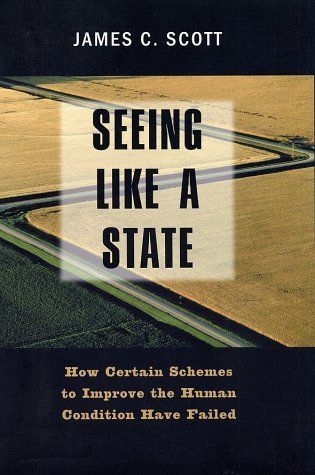
The Nation-State is one central registry of everything inside its domain that is worth registering. Nation-States like order and thus employ systems of order to account for all of the things which it has power over.
We have many ordering phenomena define our lives by the desires of Nation-States:
Social Security Numbers: 123-45-6789
Physical Addresses: 1234 Taylor Ave N, Unit #56
Telephone Numbers: (123) 456-7890
Business EIN Number: 123-45-6789
The serialization of the people and entities inside of a Nation-State helps a state become aware of what composes it. Once a Nation-State accounts for everything it controls, it can also begin to tax everything.
It goes much further than just serializing people and their businesses.
According to Seeing like a State, the current orderly Nation-State structure we have is built upon previous attempts to account for the value of the land that tax collectors manage. Traditionally, land would be evaluated and measured on its ability to produce yield on its crops, and the Nation-State would employ surveyors to properly access the value of land, based on the value of the crops that the land could yield. Good, fertile land would be taxed more than arid land, because the central accounting body wants its fair share.
Early systems of agricultural accounting would go so far to map out the land and the types of crops that grew on it. Aspen trees planted every 6 feet, with 6 foot-wide rows, used for lumbar farming, would be taxed by the State according to tax code 653.723.51. Potatoes were to be planted every 6 inches, meaning that one acre could host exactly 120,000 potatoes and would net the State exactly $50,000 in taxes on an annual basis.
The Nation-State would go through strenuous efforts to ensure it was accounting for all the value that it had dominion over, as knowing this would lead to high tax revenue for the State.
This is how wild, diverse forests would get turned into homogenous crops of one specific type of tree. Forests turned to grids of trees suitable to be farmed for lumber. Wild plains turned into orderly pastures with only one kind of crop. Chaotic, unsettled lands turned into grids of streets, all with numbers.
Nation-States need things orderly, numbered, and accounted for, in order to optimize their ability to coordinate resources. The central registry of a Nation-State needs to be aware of all valuable resources inside of what it has control over, so it can properly extract taxes and grow the State.
🧠 Insight: The crypto industry has recently bumped up against this Nation-State desire to label and subsequently tax everything. The tax collecting ability of the US Treasury has been hampered by its lack of oversight of property and ownership inside of an economic system that it cannot control.
This is why they don’t like crypto.
The Nation-State desire to account for everything is good for the health of the system as defined, but it comes at the cost of individual freedom. Nation-States reducing all humans and their property down to a serialized number for tax collection purposes is inhumane and restrictive of freedom, and why there is always pushback against government overreach.
That’s because if the Nation-State gets its way, the long-term conclusion of Nation-State desires might looks something like this:

The Nation-State is built upon a central intelligence about the state of itself, as well as the world around it.
It is looking to ‘know’ the world around it, and extract its resources.
This concept explains the frequent oppression of indigenous cultures by Nation-States. Nomads are difficult to tax because you can’t find them at one specific location. The resources they produce and consume are nebulous and difficult to trace because they are produced in a disorderly fashion. Nation-States don’t know how to measure the value of the goods that are produced or consumed “in the wild”, aka “the unaccounted for”.
Indigenous cultures inherently do not mix well with Nation-States. Indigenous people operate closer in harmony with nature, whereas Nation-States want to consume nature’s disordered chaos and output ordered civilization. We have seen Nation-States confine and restrict indigenous cultures into smaller and smaller areas of land, as the desires of the Nation-State begin to capture and order the world around non-Nation-State cultures.
This has become a significant blemish upon the current social structure of the world, and one of the great sources of stress and inequality across global society.
If larger and more just human organizational structures are ever going to emerge, they must be rid of cultural bias over the legitimacy of identities or objects under their domain.
Seeing like a Protocol
Crypto-economic systems are capable of managing significant amounts of responsibility previously held by the nation-states, while preserving the rights of the individual to maximally express their desires upon the world around them.
Ethereum is a neo-Nation. A Nation in the clouds, with bottom-up opt-in participation, rather than imposed top-down coercion.
While the mechanisms for participation are different, we see similar functions of Nation-States that are also facilitated by Ethereum.
Ethereum also likes things ordered and serialized. In fact, if you want anything to exist on Ethereum, you must comply with the laws of the EVM.
- Want to establish a settlement on Ethereum? You’ll need an Ethereum address.
- Want an identity on Ethereum? You’ll need an ENS name.
- Want to deploy a token? You’ll need a contract address for the token.
- Want to buy an NFT? Your specific Ethereum address will need to interact with a specific contract address, so Ethereum can know what part of the ledger to update.
Ethereum is a protocol for serializing objects into the metaverse. You initialize the state of an NFT by deploying smart contract information to Ethereum.
Ethereum doesn’t need to employ land surveyors or have treasury departments. It doesn’t need labor to understand the value of the resources inside its domain.
Ethereum knows:
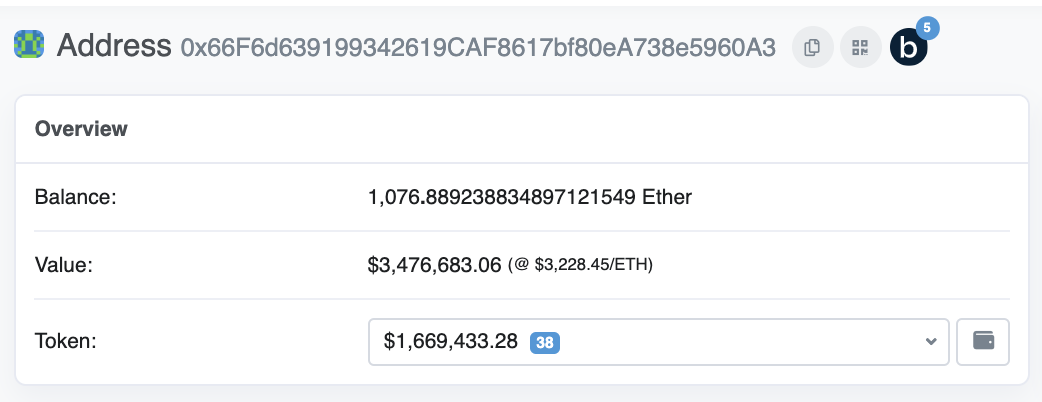
Since Ethereum is an internet protocol, it won’t ever come knocking in order to collect taxes. One of the significant improvements of Ethereum as an organizational system is the cost-efficiencies in maintaining liveness about the ledger. By removing its own material desires of maximal tax extraction, Ethereum collects only the minimum amount of tax revenue (e.g. transaction fees) needed to maintain the system.
Taxes are paid by those who actually incur public costs to the members of the Ethereum neo-Nation: those who secure and make state updates to the global ledger.
Object Permanence in the Metaverse
Whatever the metaverse is, it will require object permanence.
The items found in the metaverse must behave like items in the real-verse. Objects in the metaverse must collide with other objects in the metaverse. If they don’t, are they even objects at all?
Metaversal objects must be aware of each other’s existence. In the digital world, this can only be achieved is if all objects are known to a single source of truth of all the known items in the metaverse.
While Nation-State assigns numbers to objects it discovers inside its domain, individuals assign numbers to the objects that they create on Ethereum. The process of ‘tokenization’ manifests the object into the metaverse and makes that object ‘known’ to all the other objects in the same plane of existence.
A universe is born.
This is Ethereum’s role as a neo-nation. Register all the objects, and make them interact.
In DeFi, we call this ‘money legos’, but in NFTs we call this the ‘metaverse’.
‘Writing’ was invented when humans needed to make records of object-ownership in the real world, and this invention began the process of recorded history.
The metaverse will arrive via a similar process. First, we document the items that exist inside it upon a universal ledger, and then we will build a digital civilization around that single source of truth, which we call the metaverse.
A universal ledger is the underlying skeleton of a metaverse.
Identities are Objects
Like all organizational systems that came before it (religion, nation-states, etc.) Ethereum is composed of people. But so far Ethereum has had difficulty in actually knowing who the individuals who compose it actually are.
Our human souls and human identity are not something that can be serialized and added to the blockchain. That is something exclusively in the meatspace layer of the world, and always will be.
Nation-States don’t care about the human spirit; they give you an 8 digit social security number and move on. Your identity is bestowed upon you by nation-states. Also, it expires every 6 years; if you don’t go to your nearest licensing department, there will be consequences.
In the metaverse, you choose your own identity.
Ethereum addresses are free for everyone and aren’t individually capable of linking an address to a person. I’ve personally used over 50 Ethereum addresses over the course of my time in Ethereum, and many of those are shared with other humans.
While my personal activity is largely confined to just a handful of addresses, all of the fungible ERC20 tokens that pass through these addresses do nothing to actually link a specific identity to that address.
Currency and other fungible assets are designed to remove associations between owner and unit. Currency is supposed to be a faceless apolitical public utility that holds no bias and accepts no information about the entities that use it.
ERC20 tokens come and go fluidly out of wallets. Since they’re fungible, once they co-mingle with other tokens, they lose any sort of traceability.
My Ethereum address holds a balance of ETH, UNI, AAVE, MKR, or any other ERC20 token…just like thousands of other Ethereum addresses. Non-differentiated, non-unique. Indeed, I could sell all tokens from one wallet, and rebuy them from another wallet, without any link between the two wallets.
As privacy tools like Aztec come online, I could even send ERC20 tokens from address A to address B without associating the two addresses, making the addresses useless for establishing identity.
The inherent neutrality of ERC20 tokens is a fantastic property that is required to produce a fair and open global financial system but falls short of establishing what would be required to host a digital nation in the cloud.
This is where the power of Non-Fungible Tokens comes in.

My Ethereum address holds Cryptopunk #1118, of which there is only one. I cannot privately send Cryptopunk #1118 to another wallet. Since there is only one Cryptopunk #1118, the NFT functions as an on-chain object establishes a chain of identity across all Ethereum addresses it touches.
Rather than the address itself, it’s the objects that the address holds that Ethereum is concerned with.

ERC20’s do nothing for associating an identity to an Ethereum address, but ERC721’s do everything for it. As a real metaphysical being, people can transverse the meta-sphere and interact with the objects they come across in their travels.
NFTs are specific, and thus ownership over an NFT illustrates specific taste.
Here’s my NFT wallet on OpenSea:
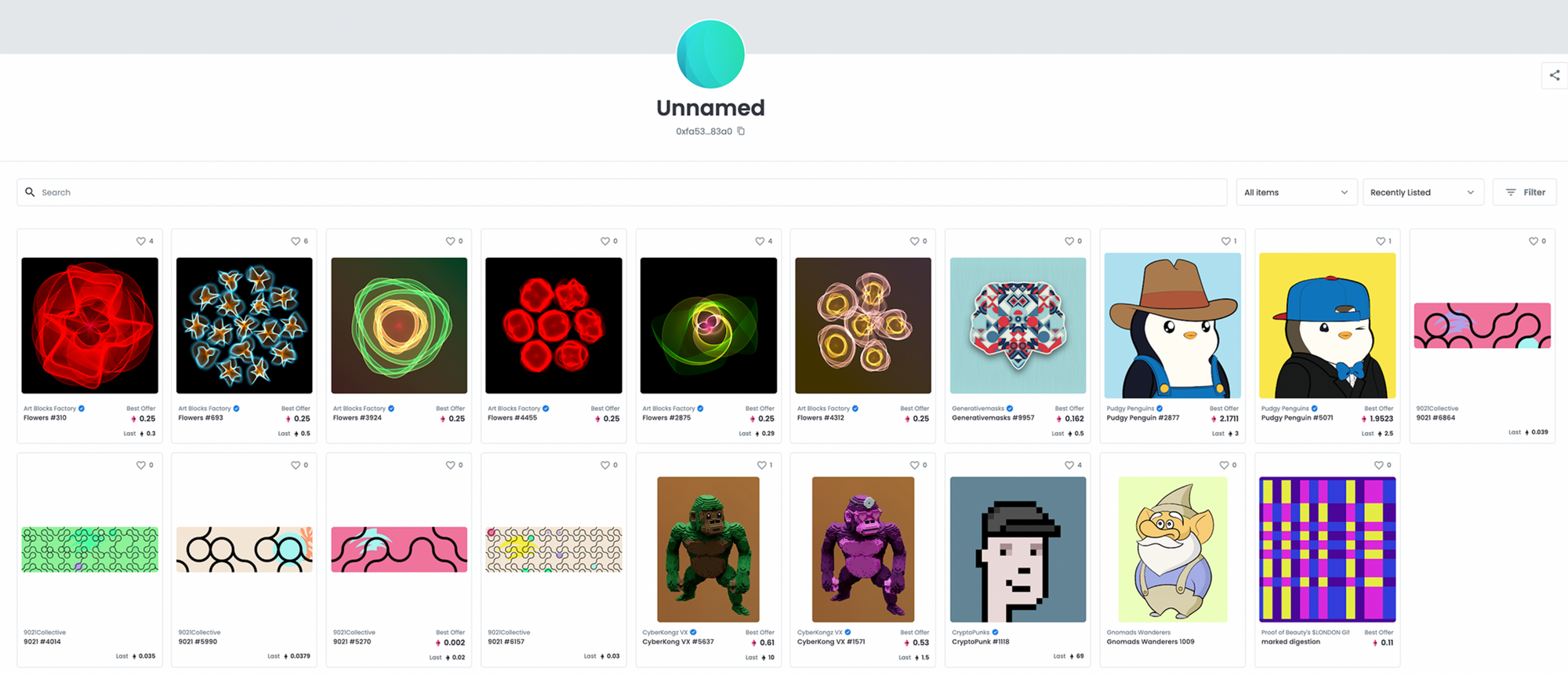
There are many wallets, but this one is mine. No other wallet hosts this specific collection of human-generated objects. NFTs begin to form a shadow of identity behind the private keys that control them.
The NFT PFP Avatar Movement
It becoming trivially easy to understand the human behind an address when people add NFTs to their social media profile pictures.
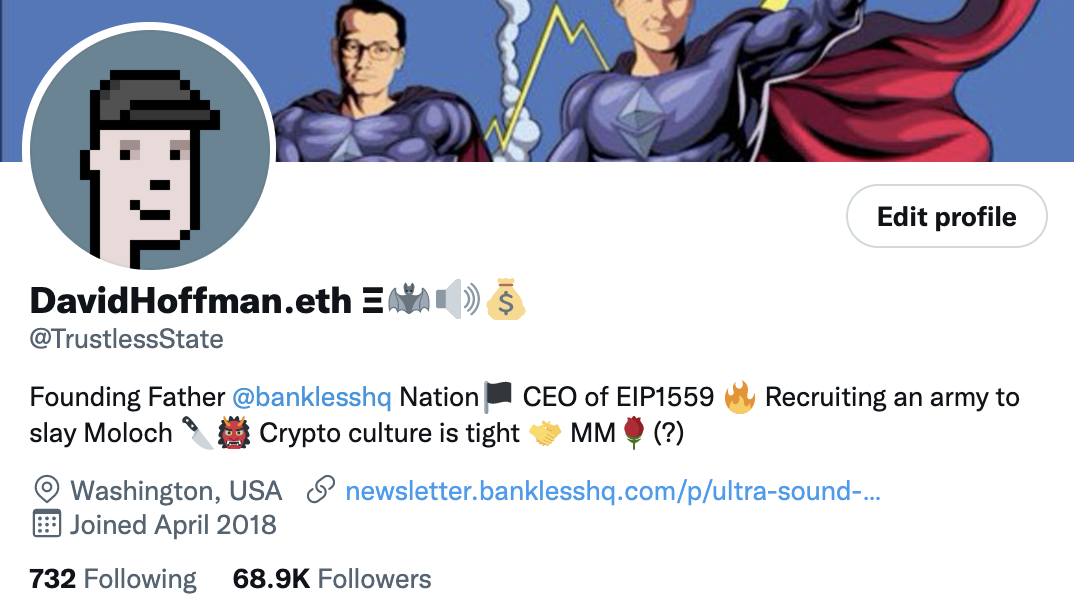
ENS names do the same trick. In fact, ENS is actually making great strides with adding an identity layer to the ENS name itself, above and beyond just a human-readable name appended to an Ethereum address. I expect ENS to play a significant role in aligning identity with Ethereum.
ENS addresses are NFTs too, and they contribute their own unique layer of identity on Ethereum.
Serializing Humans on Ethereum
Ethereum doesn’t bestow your identity upon you the way a Nation-State assigns you a number at birth.
You choose who you are on Ethereum.
Ethereum doesn’t know that you’re a specific human, nor does it care. But when you purchase an NFT, especially one that you put as your Web 2 avatar, you are selecting one specific NFT from the millions+ that exist to become a digital representation of your digital self.
I’ve chosen Cryptopunk #1118 from contract address 0xb47e3...…3BBB, as a representation of my human taste and human spirit, and I’ve chosen to bestow the properties of Cryptopunk #1118 to a random Ethereum address.
I’ve chosen my Ethereum address, and I’ve determined what its identity is. In turn, Ethereum becomes aware of the presence of a specific identity that exists, which is molding Ethereum by instantiating specific identity properties inside of one Ethereum address.
With the association of specific objects in the Ethereum metaverse, that Ethereum address stands apart from the rest. It has come in contact with a specific set of unique NFTs, and those non-fungible interactions distinguish it from all other Ethereum addresses that exist inside the metaverse. It has its own traceable path, with its own unique story to tell.
Only it has taken its path, and that has made all the difference.
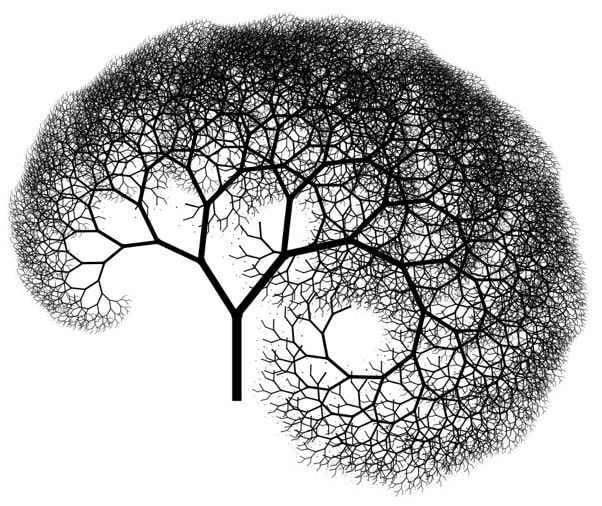
NFTs are how humans become an identifiable object to the state of Ethereum. Not the Nation-State of Ethereum, but the state of memory of the Ethereum Virtual Machine.
Weird, they use the same words!
A Renaissance of Identity
Ethereum identity flips the script from how we know it under the Nation-State model. On Ethereum, we choose our identity. Rather than have our identity bestowed upon us in the form of an eight-digit number, Ethereum asks us: what identifies us?
In the Renaissance, a time marked by the rise of the individual out of the tyranny of oppressive, top-down religion, we saw a transformation of art from 2D profiles and primitive perspectives, towards 3D representation and photo-realistic styles.

I believe the metaverse offers a similar paradigm shift upon the properties of identity. We are on the cusp of a 2D to 3D transformation of identity.
In the physical world, our identity is largely tied to our physical form. So much, in fact, that Nation-States use skin color, eye color, hair color, sex, and height to register your properties to its central database so it can keep track of you.
Check your ID, it’s all on there.
The physical properties of your human form simply aren’t relevant to Ethereum. Ethereum has no way of knowing your skin color, nor does it care. There is nothing stopping some humans with some specific physical properties from selecting a digital representation that is entirely different than the DNA they were bestowed by birth.
The practice of mindfulness teaches individuals how to separate their mind from their body, and to be more aware of their internal processes as independent from the processes of their physical body. Your human form is an overlay upon your human spirit. While these things interact, they are also distinct.
Given the opportunity, your human spirit could, in theory, choose to embody a different vessel. Your face is just what you see in the mirror. You are you.
Mind-body dissociation 🤔
Digital Metaverse Representation
I FOMO’d into my CryptoPunk after pplpleasr’s Fortune magazine cover debuted.

The cover is full of references to crypto-twitter personalities. There’s Crypto Dog, Loomdart, Banteg, Tetranode, Santiago Santos, Cobie, and others.
As a crypto-twitter personality, I was super bummed that I wasn’t included in the cover. Every crypto-person had an opportunity to be a part of crypto history, but it became immediately obvious that I was never going to have been included in this piece of art; my Twitter/social media avatar was a picture of my human form.
There were no humans in pplpleasr’s images… there were only digital representations.
That was the point.
Criteria for inclusion in this historic piece of art required a digital, non-human representation of identity. Pplplear’s art was a slice of the metaverse, and the human form does not compute inside this plane of reality.
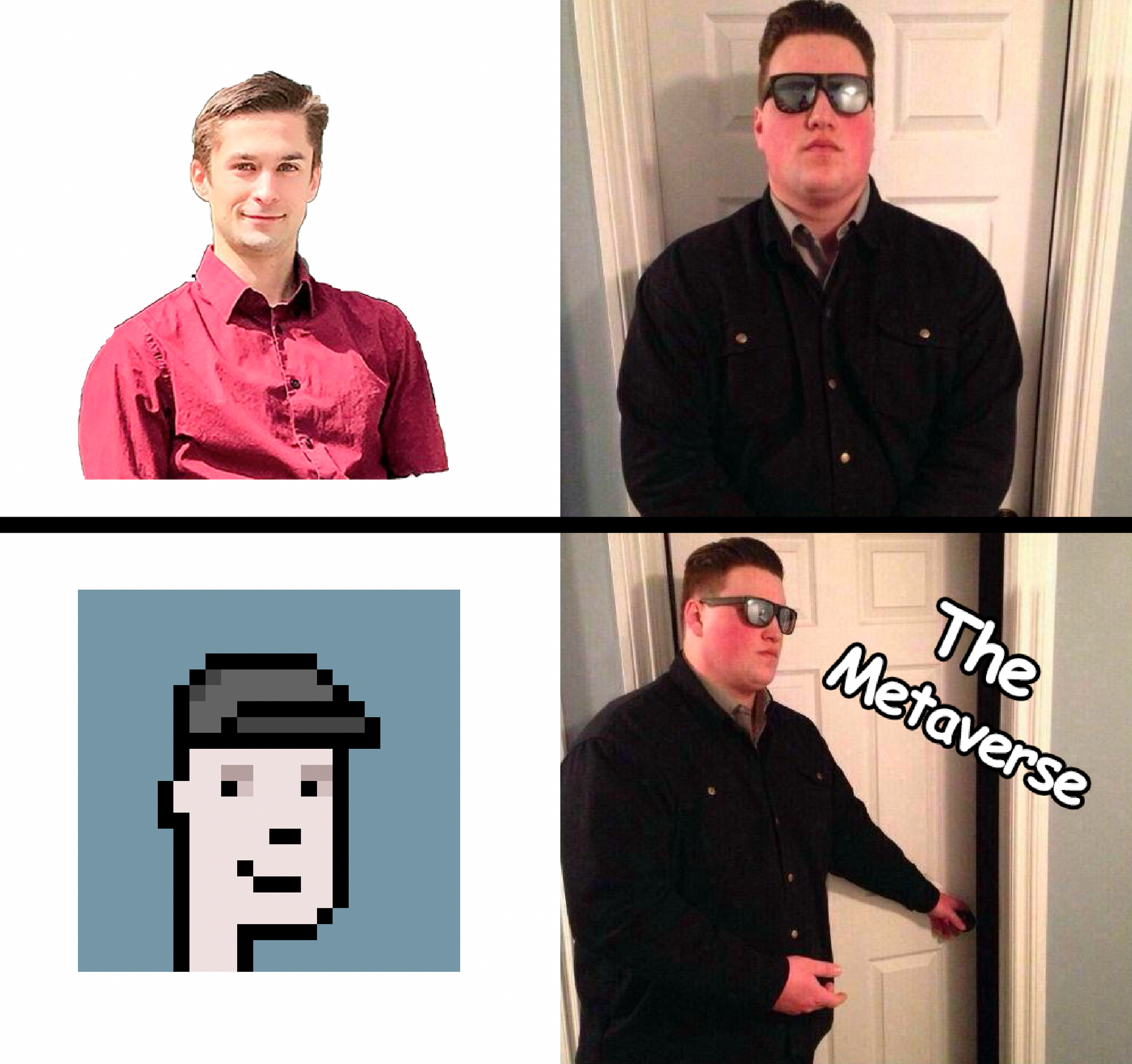
The Rest of the Metaverse (Loot??)
Identity is the first thing that arrives in the metaverse, but as soon as we establish ourselves, next comes our things. As soon as humans evolved from nomadic hunter-gatherers to agricultural settlers, we started collecting things.
Similarly, as soon as we’re capable of settling the metaverse, it’s time to collect items!
Metaverse Loot
Just this week in Ethereum, we have seen something brand new capture an insane amount of attention and energy.
Loot (for Adventurers) was dropped on the 28th, where 8,000 ‘bags’ were minted, each with 8 different items, each on a scale of rarity.
On OpenSea, the items look like this:

Previously, NFTs have all been about a specific JPEG. The NFT generative art or NFT PFP movement has been centered around purchasing specific JPEGs that have come to be associated with Ethereum culture.
The JPEG standard is just a specific cosmetic layer upon an object that doesn’t actually hold any cosmetic information about itself.
So when you buy a loot bag, are you buying a JPEG that is a list of items?
No.
The JPEG on OpenSea is just an illustration of the token, not the token itself. These Loot Bags tokens have properties that create a set of objects, and bestow these objects with unique properties.
OpenSea hasn’t been updated to render the properties of these objects, but websites like 0xInventory.com are capable of expressing the relevant properties of Loot bags.


The 0xInventory.app website is rendering a higher resolution version of the metaverse, as it relates to the Loot tokens. It uses the properties embedded inside the tokens to make cosmetic changes to its front-end. These changes are primitive and simple; the text that identifies the object has changed colors based on rarity.
The changes that 0xInventory.apps brings to the world are just surface-layer changes that are simply illustrating the properties of the tokens themselves, whether they’re rare, epic, legendary, or just common. But this is the first step that tokens must take in expressing their properties into the metaverse that’s rendered around them.
Today, your token changes the color of its own text on a website.
Tomorrow? The metaverse manifests specific digital objects into your hands and changes options that are available.
Loot Forks
What did Loot Project unlock?
Potentially nothing. It’s brand new, and no one knows. Anything that is 4 days old (at the time of writing) has an unmeasurable amount of risk to it.
But ever since the genesis of Loot Project, derivative projects have been spun up to ‘attach’ or ‘append’ value upon the Loot corner of the metaverse.
While this corner of the metaverse is completely unstable, this model for establishing how the metaverse grows has gained precedent. This new model has pushed expression to the surface, while value and utility are embedded deeper into the Ethereum protocol.
A few people have noticed the potential behind this model. By embedding tokenized properties into a deeper layer of the technological stack, you optimize for maximal cosmetic choice, while establishing a single-source-of-truth of object properties inside the metaverse.
This helps reduces complexity and development costs for developers, while giving freedom, creativity, and expression to users.
Ability Scores
Someone spun up an ‘Ability Scores’ contract and, and created ‘stats’ that can be bestowed upon the bearer of these Loot objects. They’re basically RPG stats that are common throughout legacy games.
After all, Ethereum is a money-game landscape.

Characters
A contract was spun up to establish the first manifestation of a ‘character’ that wears all the loot that is held inside of a Loot bag.
There was no relationship between this and the original Loot team; it was just spun up by like-minded participants who wanted to append additions upon the Loot ecosystem.

Realms
‘Realms’ were able to be minted by Loot bag holders, and they’re some kind of generative map of an imagined universe that could theoretically surround the Loot. It’s not yet known how it will interact with the above objects.
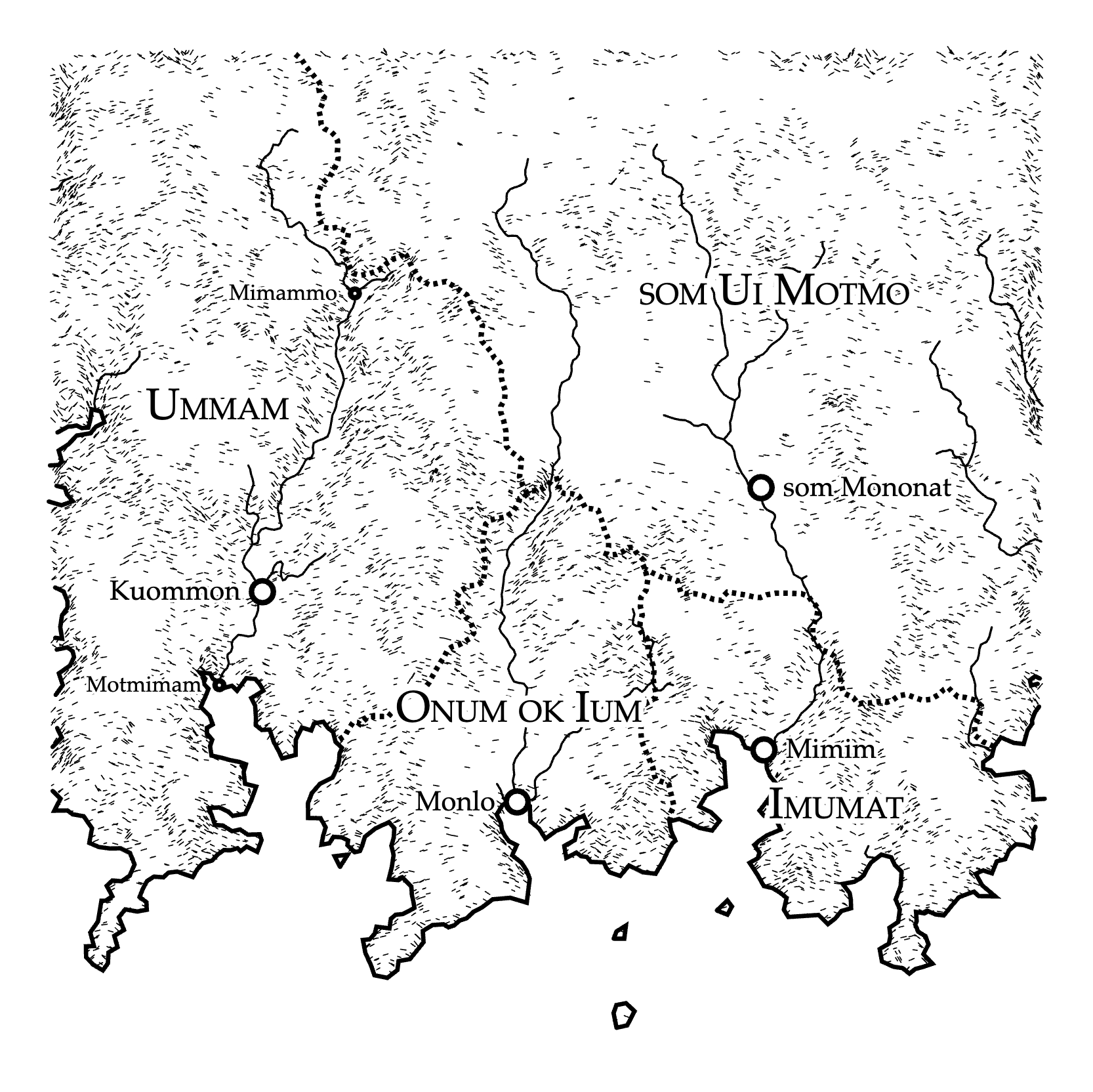
A Generative Metaverse
The metaverse will be rendered at the periphery.
Ethereum cannot dictate what the metaverse will look like, it can only host the valuable objects that it holds.
‘The metaverse’ cannot be determined by a single source of truth. That is fundamentally unscalable. Rather, the metaverse will be rendered locally, based upon a local set of rules and properties. But while the metaverse will be rendered locally, the valuable objects inside of that metaverse will be common and interoperable.
Composing the Metaverse
Whatever the metaverse is, it will compose itself as an emergent structure.
There will not be a specific genesis moment or location, but rather the metaverse will slowly manifest all around us. The metaverse will be a composable universe, whose objects are shared and interactive.
In order to become more immersive, the metaverse will have to manifest cosmetically. The computation required to produce a cosmetic layer upon the metaverse will not come from “a blockchain”; that’s technologically unfeasible. It’s more realistic that the metaverse will be rendered by parameters that are determined by the local rules of the relevant metaverse. The Fortnite metaverse will manifest by the Fortnite rules, Axie by Axie’s, and Decentraland by Decentraland’s.
What makes all this part of “the metaverse” is the shared registry of metaversal objects. Just like SMS, and TCIP, the metaverse will be built upon a protocol for identifying objects.
If it matters in the real world, it can be represented by a serialized object in the metaverse.
The metaverse may begin with many distinct and incompatible silos. These separate silos will only acknowledge certain specified objects that are relevant to that corner of the ‘verse, and the only connections to the rest of the metaverse will be via deep connective structures like Uniswap or OpenSea. Many items will only be relevant to a specific locale of the metaverse, they will be connected by the underlying liquidity layers of ETH, Uniswap, and OpenSea.
But just as DeFi slowly migrated from separate applications into single universal financial structure, the metaverse will stitch itself together via similar money-lego mechanisms.
The metaverse will grow by appending larger and more seamless components of a metaverse-universe upon a central foundation of asset and object identification. It will slowly manifest into one composed alternative dimension of digital existence.
Ethereum is the Economic Foundation of the Metaverse
Specifics on how the metaverse actually manifests will be determined by the unique rules of a particular corner or niche. Yet, one thing is certain: the metaverse requires:
- a central asset registry
- a layer of financial applications
- an economic engine
This is what Ethereum is.
A registry of tokens. A composition of DeFi applications. A native money and economic system.
Composed together, these are the underlying foundations of an economic system for the metaverse.
Ethereal Desires
We began this article illustrating the desires of a Nation-State, and alluded to how its physical nature establishes material desires upon the land over which it controls.
Crypto-economic systems like Ethereum are a step-function improvement between the relationship between the individual and the social organizational structure that Ethereum offers. Rather than devolve humanity into a yield farm it harvests, Ethereum is a public goods system that optimizes for minimal value extraction.
Rather than telling it how it is, the people of Ethereum tell Ethereum what it is. Rather than optimizing for rent-seeking, Ethereum charges based on the size of the object (in data terms), and the complexity of its interactions with objects around it.
State-Level Taxes
All economic systems we have seen in history has had some sort of tax collection system. All systems need to maintain self-protection and the stronger the economy can finance its own protection, the better the civilization does.
👉 I wrote about this in Ultra Sound Money
EIP 1559 collects taxes proportional to one’s use of Ethereum. The more data you put on-chain, the more you pay. Rather than taxing wealth or income, Ethereum taxes you based on your consumption of a public good: block space.
As the metaverse expands, more and more objects will arrive inside of Ethereum’s block space, and some portion of these objects will have continued on-chain interactions with other objects, which will require state-updates on Ethereum in order to update the state of the surrounding metaverse.
The vast majority of object interactions in the metaverse will be either be executed via rollups (in hostile environments, “the wildy”) or by a trusted database (in friendly environments). But even as layer-1 transactions become cheaper and more efficient, this will largely be offset by a Cambrian explosion of metaversal objects and object-to-object interactions.
The metaverse will be no friend to cheap gas prices, which thanks to Ethereum’s monetary policy, generates a flywheel of security around the ecosystem. As the metaverse grows larger, Ethereum becomes more secure, making the metaverse itself more secure with it.
ETH is Metaverse Money
The meme “Art is Priced in ETH” was created during the Winter 2020 NFT boom, as everyone noticed that all NFTs were valued in ETH terms.
CryptoArt is just the beginning, of course. Naturally, the metaverse will start with the highly-valued speculative art pieces before it matures into a more functional, intertwined ecosystem.
While the metaverse is in its early phases, it will be siloed and separated. The only unifying thing about the metaverse will be the underlying financialization layer, aka DeFi, that establishes a common economic base between all the sub-zones of the metaverse.
The first commonly-shared aspect of the metaverse will be ETH. ETH is common money that unites all separated silos of the metaverse upon a single liquid asset. While objects inside of Axie Infinity cannot yet interact with objects inside of Gods Unchained, they both can be bought or sold for ETH, allowing value from Axie Infinity to be passed towards Gods Unchained, or any other part of the metaverse.
Money will be the first thing that ties the metaverse together, and ETH is that money.
Conclusion
This image was recently shared with me on Twitter. On the surface, it illustrates the over-hyped nature of the word ‘metaverse’, and how it is so nondescriptive that it doesn’t actually illustrate anything.
It’s simply a hyped word that everyone wants to align with.

I think this is a meme on the surface, but actually much more profound than what lets on.
All technology is progressing towards a unified body. The metaverse will build itself, and it beckons towards those closest to helping it achieve this. A metaverse is an object that calls towards its surroundings. It wants to be built, it just needs humans to do the building for it.
Like the protocol sink, the metaverse is an object that attracts. It rewards those who contribute to it, and the more scalable structures find themselves embedded deeper within the holistic structure.
The NFT mania has begun with JPEGs, but there are so many more file formats we must get through before the metaverse is established. When it comes to how this will all unfold, your guess is as good as mine.
I can only leave you with the same lessons we have learned over and over again throughout crypto:
- Fair launches work
- Leaders matter
- We’re going to ape into something until we figure it out
I’m looking forward to exploring the metaverse with you all. It seems we’ve just recently discovered massive, untouched new fields.
Let’s build something cool.
Action steps
📚 Read David’s relevant articles on this topic!
 David Hoffman
David Hoffman 


